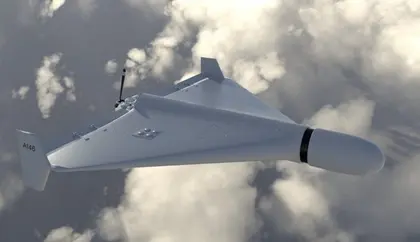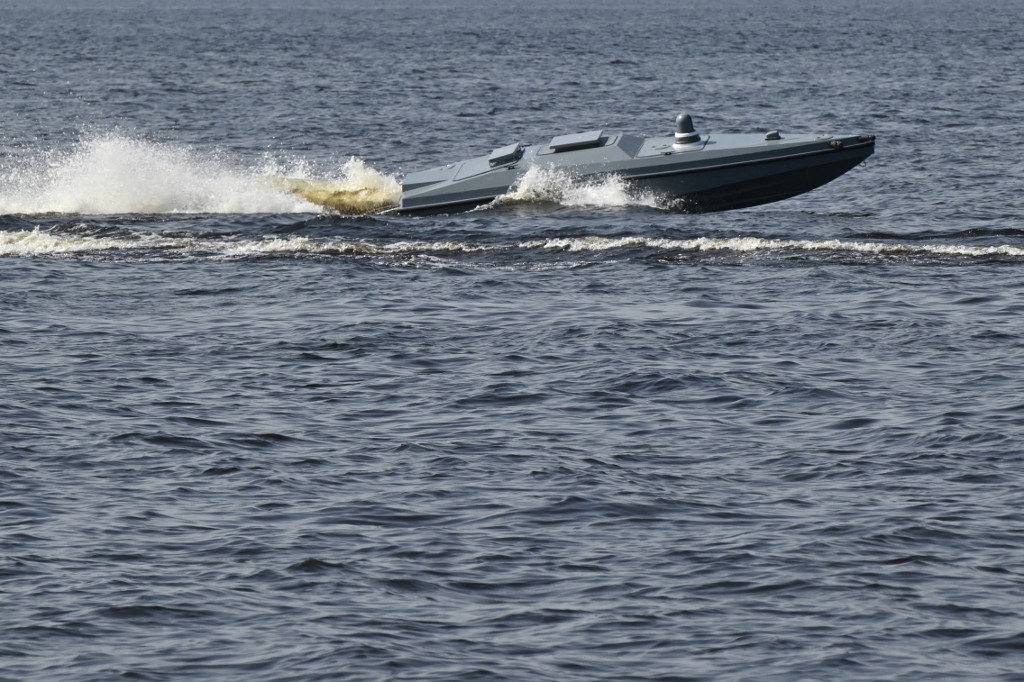Russia has begun using a new shrapnel warhead in its latest iteration of the Shahed-136 kamikaze drone, according to a new report, quashing speculation about a potentially devastating thermobaric version of the weapon.
Initial reports over the weekend speculated that a new and deadly-for-its-size thermobaric warhead was being used in Russia’s latest Shahed-136 drones, but further investigations suggest it is a less-worrying shrapnel device.
JOIN US ON TELEGRAM
Follow our coverage of the war on the @Kyivpost_official.
On December 3, Serhiy Beskrestnov, a specialist in communications, electronic intelligence and electronic warfare with the call sign “Flash,” announced that Russia had begun equipping Shahed-136 UAVs (unmanned aerial vehicle) with the more deadly type of warhead.
“Of course, we investigate all the downed Shaheds,” Flash wrote in his Telegram channel. “And what we sometimes find doesn't make us very happy. Then a new navigation system, then a GSM modem. This time, it looks like a new type of ammunition. Almost 40 kg of thermobaric charge with three [stages].”
According to him, this charge can “hit a large area of substations or warehouses.”
“This can be said to be an analog of the charge of Solntsepek and Buratino [flamethrower devices],” he said.
However, the next day, December 4, the publication Defense Express, citing its own sources among sappers who investigate and eliminate ordinance and debris of Russian long-range weapons, said that information about thermobaric warheads in Russian attack UAVs was not confirmed.

Russian Bomb Attack Kills One in Southern Ukraine
Nevertheless, drones marked “Geran-K” do employ a new high-explosive fragmentation warhead.
It has a weight of 40 kg, a diameter of 31 cm and tungsten shrapnel elements.
However, this warhead is not specially designed, but is adapted from an existing aviation missile, because it is suitable for the Shahed-136 in weight and dimensions.
The Defense Express publication said that now there are three versions of Shahed-136 used by the Russian Forces.
The first is the original one from Iran with an Iranian warhead weighing 48.5 kg. It is marked “Geran-M.”
A similar warhead is installed on drones marked “Geran-Ы.” They differ only in the Russian navigation systems installed on them.
Since the summer of 2023, attack UAVs marked “Geran-K” with a high-explosive fragmentation warhead have appeared. Such drones differ from the previous ones in production technology and details.
“The Russian Federation continues to develop Shaheds, which have become its main means of long-range destruction. So, the appearance of new types of combat units on these aircraft shells is quite likely,” the Defense Express article says.
To understand the potential danger, experts explained that thermobaric charges in Shahed-136, are capable of destruction over hundreds of square or cubic meters.
It’s difficult to determine exactly what consequences a strike with such a modified drone will have, since much depends on the type of warhead and components.
The authors of the Defense Express article gave a comparison with the charge of the jet flamethrower Shmel, which is more than 10 times less than a 40-kg thermobaric charge.
With a weight of three kilograms, the flamethrower charge hits a volume of 80 cubic meters in a confined space or 50 square meters in an open area.
Since the thermobaric warhead, which is also incorrectly called a vacuum bomb, is primarily effective for hitting enclosed spaces, including residential buildings, due to overpressure in the shock wave front.
This type of warhead can also be compared with the heavy jet flamethrower system heavy flamethrower system TOS-1A Solntsepek. The weight of which, according to unofficial data, ranges from 30 to 90 kg, with some versions ranging from 173 to 217 kg.
During the detonation of a thermobaric munition, a shock wave is formed, along which elements of the thermobaric mixture begin to move. This interacts with the air and with itself, resulting in a cloud with a temperature of 2400-2600 °C. It lasts for about one second.
This cloud fills all available space making it impossible to use structures on the ground for protection. Such a shock wave’s overpressure will affect the lungs, eardrums, and so on.
At the moment, state services say there is no evidence of the installation of thermobaric warheads in Russian Shahed-136 attack UAVs.
You can also highlight the text and press Ctrl + Enter






